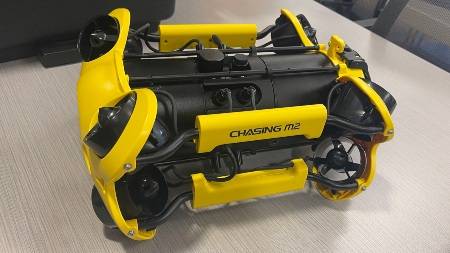Ahmet Ay, associate professor of biology and mathematics, and Krista Ingram, professor of biology, in collaboration with Ahmad Khazaee ’05, director of creative technologies, engagement, and support, have received an award from the Picker Interdisciplinary Science Institute for $146,000 for their project “New Perspectives on Wild Seal Population Dynamics: Integrating AI, Drones, and e-Genomics.”
The project will involve the development of novel conservation automation tools, including the SealNet software package for facial recognition in seals and drone-based data collection. The goal is to track population size and structure, genetic diversity, habitat fidelity, and migration patterns of wild seals without disturbing the population or ecosystem.
Khazaee is a licensed drone pilot with more than 10 years of experience. He has collaborated with several professors throughout that time, including documenting volcanic landscapes in Chile and running war games with Karen Harpp, professor of earth and environmental geosciences and peace and conflict studies, and more recently using drone-based imaging to construct 3D models of buildings and architecture with Carolyn Guile, associate professor of art and art history.
The Picker Interdisciplinary Science Institute award will fund the procurement of two new drones. The Chasing M2 ROV, an underwater drone, will assist Ingram’s team with collecting environmental DNA (eDNA) from harbor seal haul-out sites. The drone will be able to collect samples from multiple depths and will be less invasive to the seals than collecting samples by hand from a boat.
The second drone is a Matrice M30 drone with a docking station. “This combination will allow us to automate the data collection,” Khazaee says. “We upload a flight plan that sets the drone to hover 50m away around the haul-out site, allowing us to image every individual seal without disturbance, then return to its base to recharge.”
Ingram says Khazaee worked closely with her and Ay on the vision for the project, specifically on how they could use drone technology to compare AI-informed facial recognition data with genomic data from eDNA samples.
“The opportunity to merge genomics, artificial intelligence, and drone technology to study the ecology and conservation biology of seals is really innovative and exciting,” Ingram says. “We are so fortunate to have such a talented drone expert at Colgate … and we are thrilled to partner with him on the research team.”

